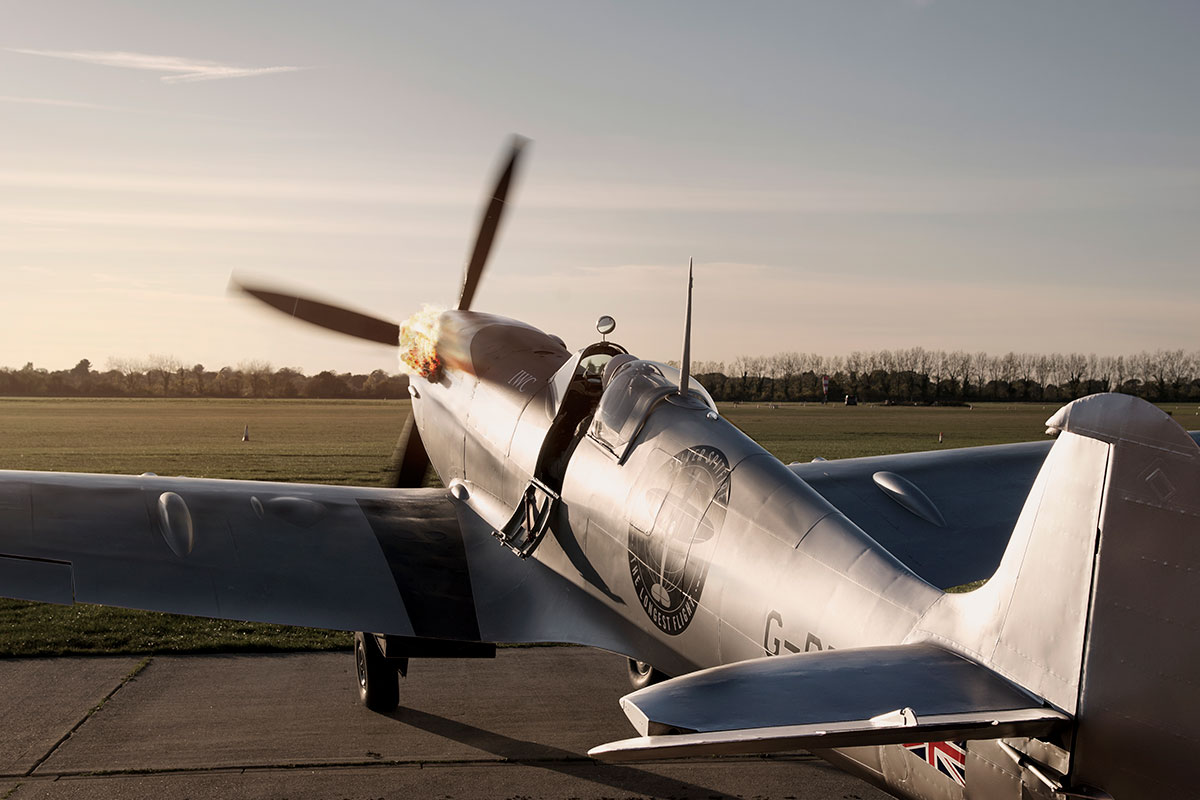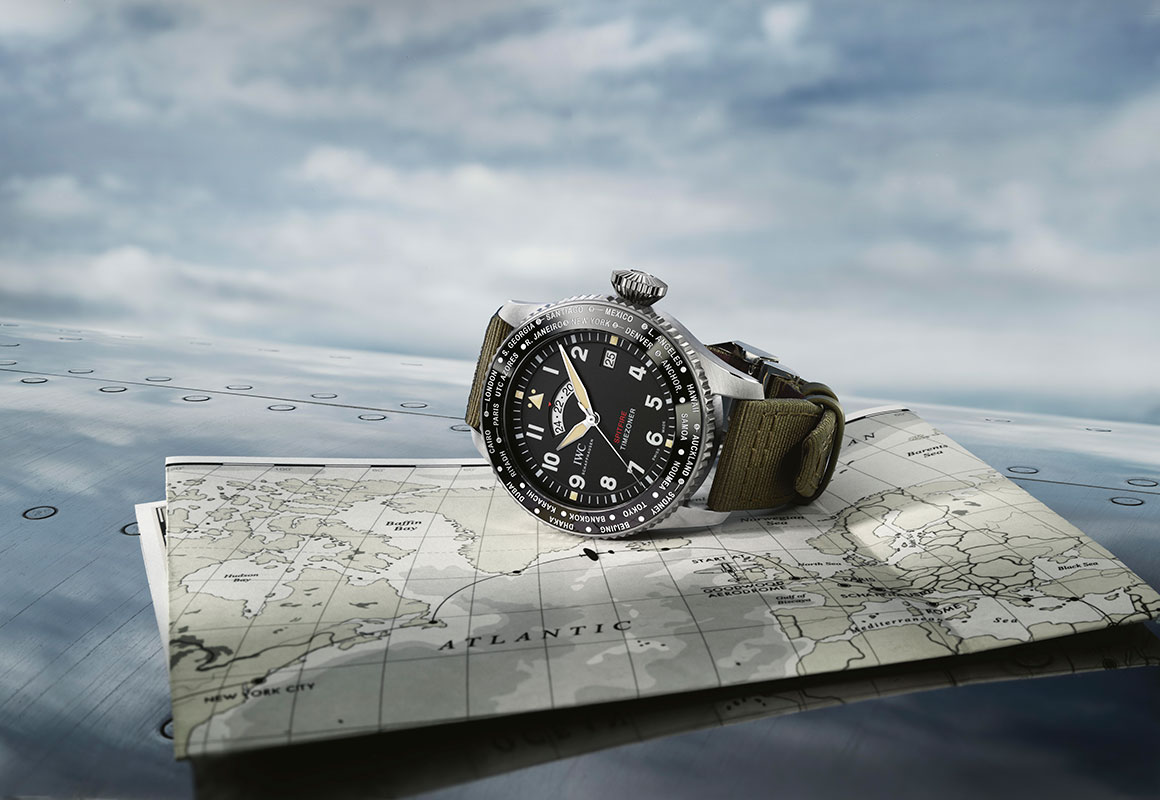This website uses cookies so that we can provide you with the best user experience possible. Cookie information is stored in your browser and performs functions such as recognising you when you return to our website and helping our team to understand which sections of the website you find most interesting and useful.
Time to fly: pilot Matt Jones on preparing to travel the world by historic Spitfire
By Michelle Johnson | 23 January 2019 | Cars & Yachts, Style
Matt Jones speaks exclusively to Tempus at SIHH about working with IWC Schaffhausen on his round the world expedition – The Longest Flight

When pilots Steve Boultbee and Matt Jones founded the Boultbee Flight Academy 10 years ago, they hoped to share their love of the classic Spitfire aircraft with the masses. Now, their Goodwood academy is the only recognised Spitfire flying school in the world, inspiring budding pilots to take the skies in an aircraft that, Jones says, has become an enduring symbol of freedom, thanks to its role in World War II.
This summer, Boultbee and Jones will be sharing that symbol with the world with their ambitious expedition, Silver Spitfire – The Longest Flight, in partnership with IWC Schaffhausen. The two pilots will circumnavigate the globe in a genuine wartime MK9 Spitfire, stripped of its guns and camouflage in order to showcase its remarkable racing design, and visiting destinations such as the Grand Canyon, Mt Fuji, the Taj Mahal and the Great Wall of China along the way.
The plane itself, a Supermarine Spitfire with the historic designation MJ271, was discovered in near complete shape (a rarity in the world of classic aviation) in a hangar by the pair. It was built in 1943 and flew 51 combat missions for the RAF and allied nations during World War II – first in 118 Squadron, including fighter sweeps over France, and later with 132 Bombay Squadron – before having a ‘wheels-up’ landing in 1944. During its active years during and post-war, the MJ271 was flown by pilots from the UK, Australia, Canada, Norway and Trinidad.
To celebrate the trip, which Jones calls "the pilot’s Everest", IWC Schaffhausen released a special edition Pilot’s Timezoner Spitfire Edition "The Longest Flight at this year's SIHH. There, Tempus sat down with Jones to find out more about the historic flight.
What inspired you to take on Silver Spitfire – The Longest Flight?
Steve I set up Boultbee's Flight Academy down in Goodwood just under 10 years ago, hoping to inspire people with this incredible aircraft. As soon as we bought the MK9 Spitfire we knew we had something special. The MJ271 flew 51 combat missions during World War II, then when it finished flying in the 1950s it was rolled into a museum in Holland, and therefore it's been preserved in its original state. There aren't many Spitfires in the world these days that can boast the same, so we thought it was a great opportunity to do something that would inspire people around the world.
We've been planning The Longest Flight for two years now. We're setting off on 18 August – the 75th anniversary of D-Day – and will fly 25,000 miles (about 22,000 nautical miles) around the world, stopping at places like the Taj Mahal and Great Wall of China along the way. Our aim is to show this beautiful piece of engineering against other wonderful, man-made structures around the world. We’ll also be flying at 1,500 to 2,000 feet, so people on the ground can see us in flight.
What makes the Spitfire such a special aircraft?
I think it’s a symbol of freedom. It's an emblem of a country and a world coming together to fight for what it believes in – And that's people, you know, that's the men and women that designed and built it, the women that delivered it, the men that fought in it. Somehow, it has captured everyone's imagination in that respect. ¬. Somehow, it has captured everyone's imagination. First, it’s the most beautiful shape. As a piece of engineering, it's too beautiful for its purpose in many ways. The designer, R.J. Mitchell, designed racing aeroplanes before he designed the Spitfire, and I think that shows in its aerodynamic shape. And then there's the sound of it – when you hear that Rolls Royce engine roaring past, that doppler shift effect – it gets to you, even as a kid. >>
Related: Tempus explores the out of this world launches at this year's SIHH watch fair

And what about when you combine all that with piloting the Spitfire? How does it compare to flying other aircrafts?
Well, being in the air is a very special thing for a pilot but being in a Spitfire is completely different to anything else. Its flying characteristics make being in the air the most freeing feeling. Everything about this aeroplane talks to you as a pilot. There are no computer systems as in modern aircrafts, so the machine has to tell you what it's doing. The way it sounds and vibrates, the way the controls move in your hands as you pilot – because you're directly connected to the controls themselves, so every buffet on the air or elevation on the rudder, you can feel it through your feet and your hands. It feels like a part of you, like you've got wings. You don't think about flying it in terms of the maths and angles, you just think 'I want to be over there,' and move to that part of the sky. It’s incredible, that a piece of machinery can be so moving.
IWC Schaffhausen is one of the expedition's partners. Were you already a fan of the brand?
Yes, I love watches. I've actually made 19 watches myself, so part of the excitement in being involved with IWC is that I've always been a fan of their engineering. IWC also has a certain purposefulness to their design – they don't just make a skeleton watch that looks amazing, it has to have a purpose. They're building their own movements now as well, which I think is fantastic. They've created the Timezoner Spitfire Edition "The Longest Flight" for the expedition, and it looks great. The Timezoner bezel mechanism is very tactile – I can’t wait to go across the date line and click it over. It's fantastic. My first proper watch was genuinely an IWC Pilot’s Watch, which I bought when I got my command – so we’re really proud to working with them.
You and Steve will be spending a lot of time in the air during the expedition. What will that time mean to you?
One of the only drawbacks of modern aircrafts is that when you're flying at 28,000ft, there's all this life going on below that you miss, that you can't engage with. With The Longest Flight, we'll be flying at around 1,500 to 2,000ft in places so that people on the ground can see the aeroplane and get excited with us. We'll be able to watch the world go past – see the colours changes, see people living their lives – and then drop down to meet them. Yes, we'll have to look after the aircraft, worry about airspace, navigation, all that kind of stuff. But mostly, we'll be able to watch the whole world go by. And what a great honour that is.








